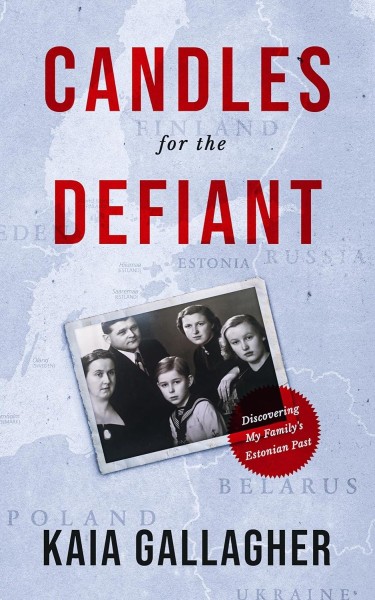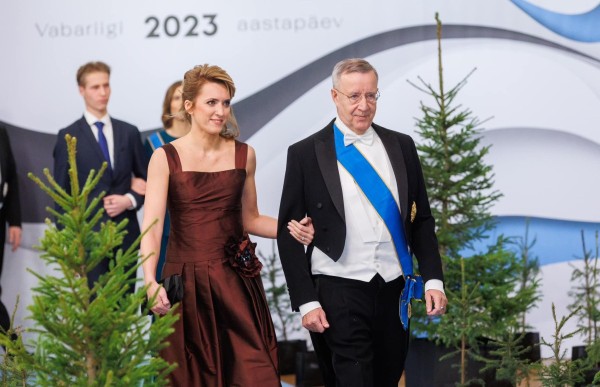
Who was Uno Puusepp? In mid-December 2014 the Russian news agency Interfax carried an item about a Russian NTV Rassledovanije broadcast,’Our man inTallinn’, which had featured one Uno Puusepp, a Russian intelligence hero. NTV had alleged that Puusepp was a former 20 year veteran of Estonia’s security police, Kapo, while spying for Russia’s FSB, their federal security service. The program was carried by NTV affiliate MIR, meant for audiences abroad.
Kapo has stated that Uno Puusepp was employed as a technical specialist from November 1991 till April 2011 at which time he went on pension and had apparently moved to Russia. As a specialist he had received his knowledge and experience from the KGB, who had been his previous employer. During his 20 years with Kapo he was supposedly to have supplied Russia with information on the USA, NATO, Estonia etc. (In the TV program Pussepp stated that his cooperation with the FSB started in 1996, at his own initiative.) His handler had been Nikolai Jermakov, a former KGB colleague and a ‘businessman’, who had lived in Estonia.
One must be reminded that not a single former KGB operative, later employed by Kapo or any other Estonian intelligence/security service had access to any NATO confidential documents nor information about allied operations. NATO regulations forbid this as do Estonia’s strict procedures. Technical personnel are not privy to agent data nor recruitment activities. The secret memos, if genuine, shown in the Puusepp broadcast are over ten years old, possibly passed on by Herman Simm.
The NTV program also claimed that Puusepp was able to ruin many US, Swedish, British, German wide-reaching anti-Russian operations. As an example, the program described a Western attempt to access Russian embassy communications via fibre-optic cable installation – details of which Puusepp was able forward to Moscow.
(Puusepp describes in some detail the USA-led, namely the CIA and the NSA, effort to intercept Russian communications. The Americans had brought very specialized equipment into Estonia for this. An AWACS airplane had supposedly secretly landed at the Pärnu airfield for this, something that experts find extremely hard to believe. Two carloads of this technology was then delivered to a ramshackle house in Aegviidu, east of Tallinn. The preparations with the equipment were done here. It was necessary to cut the Russian optical cable and insert the obtrusive equipment into the cable. But half of the signal is then lost. The government communications branch had an agreement with the Russians that maintenance work was being done in the area, thereby explaining if necessary to the Russian embassy why there were problems on the line. The communications workers did not know that in actuality Western intelligence was tapping into the Russian fibre optical cable. Only three or four government officials knew about the operation. But when they installed the very expensive technology to the fibre optics cable the channel meant for coded messages went dormant. Thanks to Puussepp, the broadcast claimed, the Russians switched to other means to forward coded material.)
Amongst many benefits that the Russians claimed had accrued to the FSB via Puusepp, the program also gave him credit for exposing one Valeri Ojamäe, a Russia intelligence operative, who ostensibly intended to offer his services to Kapo.
Intelligence experts are puzzled that Russia would publicize the identity and actitivies of its own agent. This is very rarely done. The reason could be one of many: Perhaps Moscow wanted to show that the security of Estonia’s intelligence services isn’t as reliable as has been touted; perhaps the message was aimed mainly at a Russian audience telling them the Baltic states is a springboard for intelligence operations into Russia; perhaps the FSB felt their position in the Baltics has significantly weakened and a success story such as Puusepp’s was necessary as a face saver; perhaps the FSB needed to divert attention away from another important penetration.
The Rassledovanie program has previously carried numerous broadcasts about ‘Russia‘s enemies’ In the spring of 2014 Lithuanian president Dalia Grybauskaite, was accused of being a KGB (sic) agent and her anti-Russian positions derive from her former pro-Soviet orientation. (It’s interesting to note that this ‘reverse vilification’ tactic was oftentimes used by cold war Soviet propagandists to discredit Baltic freedom-fighters in the West. Specifically, some organizers of ‘freedom for the Baltic’ movements were labelled as having been NKVD/KGB collaborators and agents, by the KGB itself, during the first Soviet occupation of 1940-1941. In other words, don’t trust him. We did.)
One can conclude that the Russians, with the Puusepp broadcast, wanted to convey that Estonia will not come to the aid of their own agents if caught by the FSB and will not agree to a swap. In actuality the situation is exactly the opposite. Russia has not attempted to help any of their agents caught by Estonia. It’s possible this abandonment of an agent has been a deterrent in the FSB’s and SVR’s recruitment efforts. It was time to give them a little encouragement by showing Puusepp enjoying his comfortable retirement. There were probably several other reasons for the production of the broadcast, full of misinformation and fabrication.
Laas Leivat (To be continued.)




























